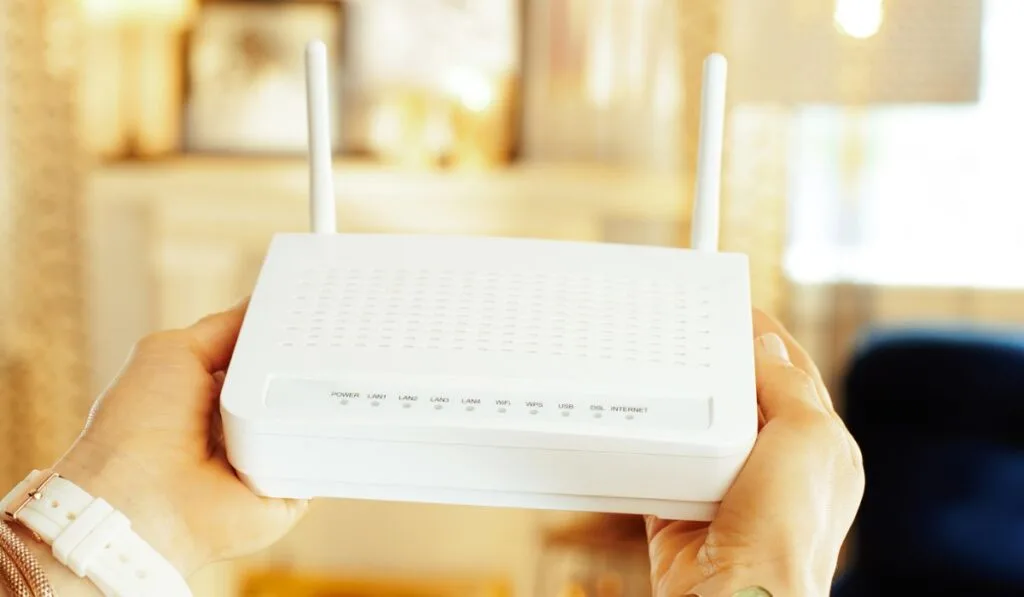Mesh wifi is considerably new in the consumer market. Before, it was only associated with large-scale businesses, but now it has been taken up by the everyday consumer. This allows not only big companies to have fantastic internet, but also homeowners too.
Mesh WiFi systems have several transmitters that blanket a larger area with more reliable WiFi signals. In contrast, traditional WiFi is broadcasts from one location which can lead to poor signal strength the further away you go. Therefore, the larger the home, the more beneficial mesh WiFi can be.
Picking a type of wifi can be a difficult and often daunting decision. No one wants to spend the money and find out it wasn’t what they needed. Whether to go traditional or with the new technology of mesh wifi, there are a few things to consider before jumping in.
What is Mesh Wifi?

Mesh wifi consists of a series of access points or nodes that work together to create a seamless internet experience that can be used throughout your home or office.
One of these access points connects to your existing router and then transmits the internet signal to each consecutive access point you place around your home or office. And from your perspective, you don’t have to worry about which of these you’re using at any one time, because it’s all one big wifi network!
Benefits of Mesh Wifi
Having mesh wifi can boost your internet signal and speed and stop any dead spots that don’t seem to have a reliable connection.
You can place these access points anywhere, from different floors to the far rooms in a house, and have the internet bounce to each one, providing optimal speeds no matter where you are.
Mobile App
Usually, a mesh wifi system comes with a mobile app that allows you to set up and manage your wifi. It can help you keep track of internet speeds and usage, set up a guest network, modify parental controls and increase security by notifying you when a new device connects to your internet.
Adjustable
Mesh wifi systems like this one (on Amazon) are modular, meaning they can be expanded upon at a later date. If you need more coverage, you can easily purchase an additional access point from that brand’s products and add it to your existing mesh wifi network. There is no need to go and buy an entirely new system.
Easily Available
Google, Amazon, TP-Link, and Netgear have all developed top-quality mesh wifi systems for the average user that are simple to install, use and manage. In addition, most mesh wifi systems are compatible with smart homes such as Google, Alexa, and Apple home kit.
Drawbacks of Mesh Wifi
Despite its many benefits, a mesh wifi system does come with a substantial cost. A quality mesh network can cost upwards of a few hundred dollars, and depending on how many access points you require, it can become quite pricey.
There is also the need to have the correct space for each access point. Ideally, each access point requires an open space, not tucked in a cupboard or drawer and away from all other electronic devices. These are some things that can interfere with the service each mesh access point can offer.
How is Mesh Wifi Different from Traditional Wifi?
Mesh wifi has some substantial differences compared to traditional wifi that utilizes a regular router. For instance, mesh wifi consists of several access points stationed around your home or office. A traditional router is a single unit that transmits the wifi across a span of an area and stretches until it fades out.
Speed
Mesh wifi allows for a consistent speed throughout the home, bouncing the signal off each access point. Traditional wifi can start strong near the router unit and slowly get worse as you move away from it.
Walls and different floors have a substantial effect on traditional wifi as it is harder for the signal to get through walls.
Location
There is also the risk that your traditional router is in a bad spot. Most homes are outfitted with internet in the basement or tucked away in a room, forcing your router to be placed in a less than ideal location. For example, if it is surrounded by your home computer or stowed away in a cupboard, then the signal will suffer.
Mesh wifi eliminates this as multiple access points can be placed where there is a simple electrical plug. This allows more versatile placement to get the optimal performance from your internet.
Who is Mesh Wifi Designed For?
Mesh wifi can be used by just about anyone suffering from bad speeds to connectivity issues. However, people with larger homes or offices, roughly 3,000 square feet and above will benefit the most by installing a mesh network. This is because things like walls and different floors significantly impact the internet signal strength and its ability to reach across a vast space.
A small to average-sized home or office can also benefit from installing mesh wifi as it can increase the speeds and help with any dead spots that might have occurred with the traditional router.
From the layout of your home to the other devices running, dead spots don’t just happen in large houses, and mesh wifi can help in this instance.
Can Mesh Wifi Be Added On to an Existing Network?
Mesh wifi utilizes your traditional router (on Amazon), which is essentially your existing network. One access point of the mesh wifi system (on Amazon) is used as the mesh router, which is connected to your traditional router through an ethernet cable. This allows the mesh network to use your home or office internet.
However, after you have installed this initial access point connected to the traditional router, you must set up a new network name and password.
This new network will then connect through all the access points and ultimately to your devices. So in a way, a new network must be established but is based on the existing network as well.
After you set up all your desired mesh access points, you must connect each device to this network with the new name and password you set up.
How Fast is Mesh Wifi Compared to Regular Wifi?
Mesh wifi can increase your internet speed quite a bit, but this capability is based on several factors.
Your Internet Provider
The mesh wifi network’s speeds are based on your internet provider. So if you have a maximum download speed of 240Mbps from your provider and are already sitting at 240Mbps, then you won’t get any speed increase by installing mesh wifi.
Your cap of internet speed is based solely on your provider, and no amount of mesh access points or finicking with your network will increase this. So at this point, if you need higher speeds, it is best to reach out to your internet provider.
Location
Location is also an important factor when looking at your internet speed. For example, if your mesh access points are in cupboards or tucked away, this will also affect your speeds.
Other electronic devices can also disrupt the signal strength of an access point. So you want to ensure each access point is separated from every other electronic device by at least a few feet.
The Mesh Wifi System
Not every system is created equally, so you need to pay attention to a few things, such as tri-band or dual-band and bandwidth capabilities. Some good brands to look at consist of Google Nest (on Google store), Amazon (on Amazon), TP-Link (on Amazon), and Netgear (on Amazon).
Every mesh wifi system also has its own recommendations for the size of the area you need to cover. Paying attention to what the product says is crucial to maximizing its capabilities.
For instance, if you purchase a mesh wifi system geared to cover 3,000 square feet but need to cover 6,000 square feet, you will most likely come up with the same issues as before, such as dead spots and low internet speeds.
How to Decide Which Router is Best For Your Home

Deciding which router, from traditional to mesh, is an important decision as not everyone will benefit from mesh wifi. There are many things to consider when shopping around what fits best with your home and lifestyle.
Cost
The cost of mesh wifi (on Amazon) is usually more expensive than a traditional router (on Amazon). Mesh wifi can range from $100 to $500, depending on the brand, limitations and how many access points you need.
A traditional router usually costs between $60 to $200, depending on the same criteria as a mesh network. So if your budget doesn’t quite allow installing mesh wifi, a traditional router might be your best bet.
Ease of Use
Both mesh and traditional routers are incredibly easy to use. However, mesh wifi does require a bit of know-how. A traditional router is more of a plug-in and let it run type of device, while a mesh network requires multiple units and, usually, a smartphone for the app.
Integration and Features
Traditional routers are basic models that allow you to have the internet. They generally don’t come with any monitoring system unless you want to pay the big bucks. Even then, in order to customize or manage the settings, you have to go to a laptop or desktop to do so.
On the other hand, mesh wifi comes with an app that allows you to monitor the usage, speeds, and devices connected, as well as set up parental controls and a guest network.
Depending on the brand you purchase, there are other features available and the integration of your smart homes like Google, Alexa, and Apple home kit.
Area of Coverage
If you have a large home or office, a mesh wifi network will be more helpful than a traditional router. Since traditional routers have a limited coverage area and mesh wifi is modular, you can customize your coverage to fit your individual space.
